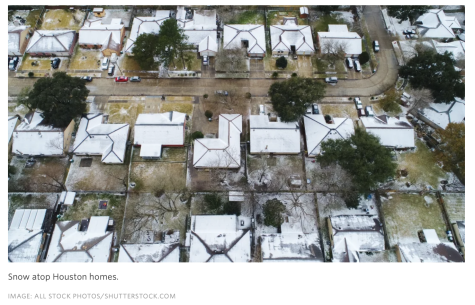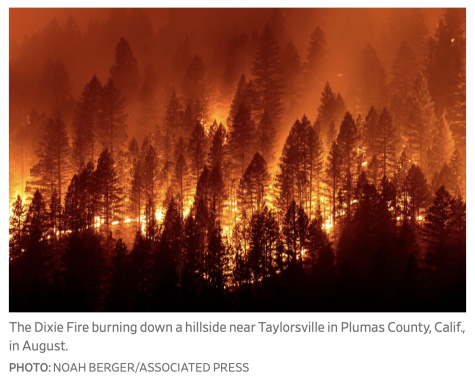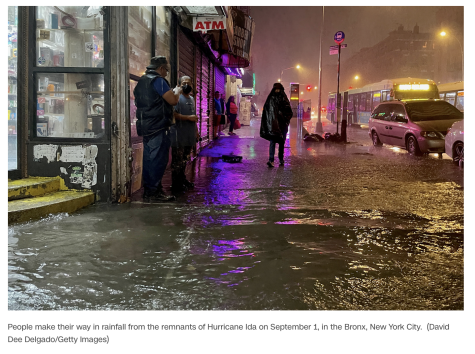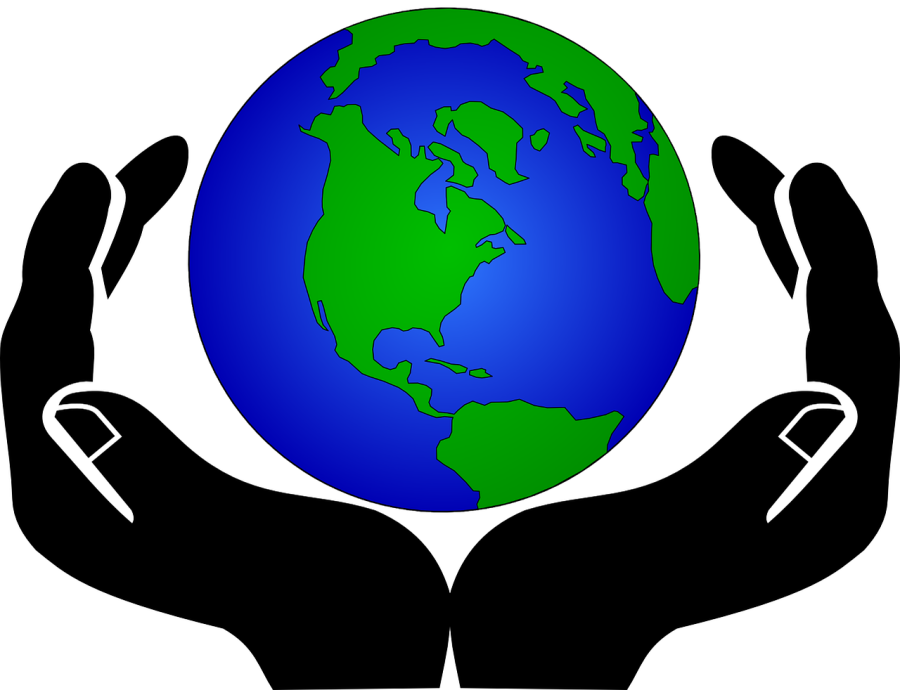The Unprecedented Natural Disasters of 2021
January 14, 2022
2021 –– a year we all hoped would be better than 2020. Not to be dramatic, but in many ways, it wasn’t. In some ways, it was even worse. Through the ups and downs of this past year, there was one thing (no, not COVID) that kept the year at an all-time low: unparalleled weather disasters.
From the extreme cold temperatures in Texas in February, to the intense heat burning thousands of acres of land in the Pacific Northwest, the year was filled with record-breaking natural disasters. The NOAA (National Centers for Environmental Information – National Oceanic and Atmospheric Administration) stated in early October that the United States experienced 18 of these disasters with losses totaling over $1 billion. The amount of damage is inconceivable, considering the typical number of disasters costing over a billion dollars per year is seven.
One of NOAA’s observatories measured the heat-trapping atmospheric carbon dioxide at a monthly average of 419 parts per million (ppm), 139 ppm more than before the Industrial Revolution. NOAA’s measurements, along with these unprecedented disasters, prove that climate change is real. Our planet, as we know it, is being destroyed more and more with each second that passes. If we don’t begin taking larger measures to slow climate change, we won’t have an earth we can call home for much longer.
However, before we get into the climate change debate, I’d like to recap the terrible tragedies that the extreme weather disasters of 2021 brought to so many people around the country.
The year started off very cold as a historic storm hit Texas in February. The storm left millions without electricity or heat for days as the unprepared power grids gave out due to the low temperatures.  Record-breaking temperatures (as low as 5 degrees) hit College Station, Texas on February 16th, making it almost impossible for many Texas citizens to leave. Some scientists have suggested that this abnormal cold was caused by Arctic warming. The winds that surround the pole have been disturbed by the warming, releasing massive amounts of freezing air to lower latitudes.
Record-breaking temperatures (as low as 5 degrees) hit College Station, Texas on February 16th, making it almost impossible for many Texas citizens to leave. Some scientists have suggested that this abnormal cold was caused by Arctic warming. The winds that surround the pole have been disturbed by the warming, releasing massive amounts of freezing air to lower latitudes.
Following the extreme cold came unprecedented hot air spreading all over the Pacific Northwest. Towards the end of June, hundreds of people died because of record-high heat. Portland, Oregon reached 116 degrees, and Seattle, Washington was 108 degrees, which is extremely hot for these typically mild-weathered places. The cause for these extreme temperatures was a terrifyingly powerful heat dome filled with pressure and air that suffocated cooling equipment. Even researchers studying heat waves were alarmed by the heat, saying that without climate change, it would have been “virtually impossible.”
Due to the unforgettably dry conditions, California’s second-largest fire ever, The Dixie Fire, hit Feather River Canyon.  The wildfire burned almost 1 million acres of land starting on July 13th. The storm was not fully contained until October 25th. The fire created storms of smoke and fire, taking the form of pyrocumulonimbus clouds, rising over 30,000 feet. These clouds traveled so far that they even made their way to us in New Jersey.
The wildfire burned almost 1 million acres of land starting on July 13th. The storm was not fully contained until October 25th. The fire created storms of smoke and fire, taking the form of pyrocumulonimbus clouds, rising over 30,000 feet. These clouds traveled so far that they even made their way to us in New Jersey.
We began the summer with a drought and ended with a Category 4 hurricane. Many smaller tropical storms hit the East Coast in mid-August, but by the end of the month a destructive storm was queuing up to take its course, first striking down in Louisiana. Hurricane Ida hit on August 29th, the 16th anniversary of Hurricane Katrina, with wind gusts of up to 150 mph. Ida’s winds were so powerful that they caused the Mississippi River to reverse flow for three hours and caused billions of dollars in damage.  Although winds slowed as the storm moved out of the south, the tropical moisture trapped in the storm began to cause record-breaking rainfall rates in the northeast. The remains of the hurricane poured more than 11 inches of rain on the tri-state area. Many individuals were trapped and killed in flooded basements across New York and New Jersey as a result of this rainfall. Although hurricanes have been a common part of life for years, models suggest that rising temperatures along with unregulated greenhouse gas emissions are making hurricanes more intense and more likely to occur in North America.
Although winds slowed as the storm moved out of the south, the tropical moisture trapped in the storm began to cause record-breaking rainfall rates in the northeast. The remains of the hurricane poured more than 11 inches of rain on the tri-state area. Many individuals were trapped and killed in flooded basements across New York and New Jersey as a result of this rainfall. Although hurricanes have been a common part of life for years, models suggest that rising temperatures along with unregulated greenhouse gas emissions are making hurricanes more intense and more likely to occur in North America.
So the real question now is, are things going to get better in 2022?
The simple answer is no. As carbon dioxide and other greenhouse gases continue to accumulate in the atmosphere, studies have shown that the next year is not going to get better in terms of natural disasters. Researchers have noted that the consequences of these warming levels are going to be more severe than anyone is anticipating.
Climate change and the pandemic are becoming more alike every day. Both are filled with many stories containing much misinformation and no conceivable end. So, it is our job to take initiative, just as many others across the country are. We each need to take as many steps forward as we can, even if they are just baby steps. Hopefully, eventually, those small triumphs will amount to something larger. And, maybe, just maybe, we can save our planet.

















































































































































